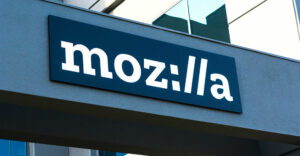
Recent low-key efforts by Adobe Systems to bolster its presence in the Linux community makes good business sense, according to one analyst who covers the company.
Adobe, which makes well-known software brands Acrobat, Illustrator and Photoshop, is keeping all its bases covered by expanding its Linux presence, maintained Martin Pyykkonen of Janco Partners in Englewood, Colorado.
“They’re hedging their bets,” he told LinuxInsider. “If Linux on the desktop is something that catches a growth wave, you wouldn’t want to be there with products that don’t run on that.”
Ahead of Curve
“It takes some time to port products that are as large and as sophisticated as Photoshop and Illustrator to a new OS and make sure they run the way people expect them to,” Pyykkonen continued.
“You’re going to want to be ahead of that if there’s a critical inflection point of Linux on the desktop. You’ll want to have your products out there and ready for that market and not miss part of that initial growth,” he said.
Some of Adobe’s recent moves show the company is serious about the open-source trend.
It has joined Open Source Development Labs (OSDL), a non-profit organizaton dedicated to accelerating the use of Linux for enterprise computing. Among the job opportunities posted at its Web site are a director of Linux market development and senior computer scientist to oversee future Adobe-sponsored open-source projects.
Duties of the Linux marketing director, according to the job listing, include identifying and evaluating strategies for Adobe in the Linux and open-source desktop market; working with a technical team to identify, scope, and implement projects which will help improve Linux as a desktop environment; and developing business relationships with leading Linux distributors and partners.
Part of Linux Evolution
Adobe’s growing interest in Linux is part of the evolution of the operating system, asserted OSDL’s CTO Tim Witham.
“When we started off, a lot of our members were in the high end of the server space,” he said. “And then we began adding people from the networking and telecommunications space. Now we’re attracting companies with a desktop focus. That’s part of the evolution where Linux is going.”
While deferring from comment on Adobe’s motives toward Linux, Witham said, “What you’re seeing is companies responding to market-segment pressures.”
“People are beginning to see that the one-size-fits-all desktop isn’t the right choice for companies,” he said. “They’re looking at ways for having the right desktop for the right environment. And there are many places where Linux fits very well into that.”
Adobe may fit well into that scheme, too, because in one of Adobe’s fortes, desktop publishing, Linux appears to be virgin territory.
“There is no desktop publishing system for Linux that I know of,” Russell Nelson, vice president of the Open Source Initiative, told LinuxInsider. “That’s clearly a product niche that’s not being filled by the open-source development model that Adobe could address.”
Servers Top of Mind
Meanwhile, a Adobe spokesperson insists that at the moment the company is more interested in the server market than it is in the fledgling desktop space.
“We’re keeping our thumb on the pulse of the desktop market, but where we see the market opportunity for our products today is on the server side of our business,” Adobe Director of Product Marketing Pam Deziel said.
Adobe’s desktop involvement, she noted, is limited to support of the Linux version of its Acrobat Reader, which is used to view files in PDF format.
“At this point in time, we haven’t seen sufficient business opportunity on the desktop for commercial versions of our intelligent document or graphics products,” Deziel said.




















































